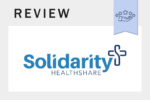This post may contain affiliate links, which means if you enroll through my link, I’ll receive a small commission at no extra cost to you.

Telemedicine is a rapidly growing field that allows patients to receive medical care remotely using digital technologies. With the rise of smartphones, video conferencing, and other digital tools, telemedicine has become more accessible and convenient than ever before. But what exactly is telemedicine, and how does it work?
Telemedicine is the delivery of healthcare services using telecommunication. It involves real-time communication between patients and healthcare providers. Telemedicine can be used in a variety of medical specialties, including primary care, mental health, and dermatology.
Below, we’ll take a closer look at what telemedicine is and how it works. We’ll explore some of the benefits and challenges of telemedicine, as well as the latest developments in telemedicine technology.
Introduction to Telemedicine
Telemedicine is a term that refers to the use of telecommunication and information technologies to provide healthcare services remotely. With the increase in the use of digital technology, telemedicine has become an increasingly popular way to provide medical care to patients who may not have access to traditional in-person care. It has the potential to revolutionize the way we approach healthcare, making it more accessible, convenient, and cost-effective.
Telemedicine can be used in a variety of medical specialties, including primary care, mental health, and dermatology. It typically involves real-time communication between patients and healthcare providers, but it can also be asynchronous, allowing patients to receive medical care at their own convenience. However, despite its many benefits, telemedicine still faces challenges, including regulatory issues, data privacy concerns, and the need for reliable technology.
Understanding Telemedicine: Definition and Scope
Telemedicine can be defined as the delivery of healthcare services using telecommunication and information technologies. It involves the use of video conferencing, secure messaging, and other digital tools to provide medical care to patients who may not have access to traditional in-person care. The scope of telemedicine can vary depending on the medical specialty and the technology used.
Telemedicine can be used to diagnose, treat, and manage a wide range of medical conditions, including chronic diseases, mental health disorders, and acute illnesses. Telemedicine can also be used to provide medical education and training to healthcare professionals, improving the quality of care in underserved areas.
While telemedicine has been around for decades, recent advancements in digital technology have made it more accessible and effective than ever before. With the rise of remote work and the increasing demand for convenient healthcare, telemedicine is poised to become a vital component of the healthcare system. However, to fully realize its potential, we must address the challenges that come with implementing and regulating telemedicine services.

Evolution of Telemedicine: A Brief History
Telemedicine has a long and fascinating history that dates back to the early 20th century. The first known use of telemedicine occurred in 1924 when a radio broadcast was used to provide medical advice to a ship at sea. However, it wasn’t until the 1950s and 60s that telemedicine began to gain traction as a viable way to deliver medical care.
In the 1950s, telemedicine was primarily used in radiology to transmit images between hospitals. By the 1960s, telemedicine had expanded to include other medical specialties, such as cardiology, dermatology, and psychiatry. In 1967, the first two-way interactive television system was developed, allowing doctors and patients to communicate in real-time.
The 1970s saw the development of the first telemedicine networks. They connected hospitals and clinics in rural areas to urban medical centers. The 1980s saw the emergence of telemedicine as a way to provide medical care to astronauts in space. In 1993, the National Library of Medicine launched the first telemedicine program in the United States, connecting remote clinics to medical experts in urban areas.
Since then, telemedicine has continued to evolve, with the widespread adoption of digital technologies such as video conferencing, mobile apps, and remote monitoring devices. The COVID-19 pandemic has also accelerated the adoption of telemedicine, as healthcare providers are seeking ways to deliver medical care safely and efficiently. As we move into the future, telemedicine is poised to become an integral part of the healthcare system, providing patients with access to high-quality medical care regardless of their location.
Types of Telemedicine: Synchronous and Asynchronous
Telemedicine can be broadly categorized into two types: synchronous and asynchronous.
Synchronous telemedicine involves real-time communication between patients and healthcare providers. This can be done through video conferencing, phone calls, or instant messaging. Synchronous telemedicine allows healthcare providers to diagnose and treat patients in real-time, and patients can receive immediate medical care without having to leave their homes. This type of telemedicine is particularly useful for urgent care, mental health counseling, and consultations with specialists.
Asynchronous telemedicine allows patients to receive medical care at their own convenience. This type of telemedicine involves the exchange of medical information such as medical records, diagnostic images, and test results through secure messaging or other digital tools.
Healthcare providers can review this information at a later time and provide a diagnosis or treatment plan without the need for real-time communication with the patient. Asynchronous telemedicine is particularly useful for follow-up care, chronic disease management, and prescription refills.
Both synchronous and asynchronous telemedicine have their benefits and limitations, and which one you use will depend on the medical expertise needed and your specific medical needs.

Advantages of Telemedicine: Accessibility and Convenience
Telemedicine has several advantages that make it an attractive option for patients and healthcare providers alike. Two of the most significant advantages are accessibility and convenience.
One of the biggest barriers to accessing healthcare services is geographic location. Rural and remote areas often lack access to medical specialists and facilities, leading to disparities in healthcare outcomes. Telemedicine can bridge this gap by allowing patients to receive medical care remotely, regardless of their location. This can increase the amount of access to care for underserved populations and reduce healthcare costs by avoiding unnecessary travel.
Telemedicine is also convenient for patients. With telemedicine, patients can receive medical care from the comfort of their own homes or workplaces without having to take time off from work or travel long distances. This can be especially beneficial for patients with mobility issues, chronic illnesses, or busy schedules. Additionally, telemedicine can reduce wait times for appointments and minimize the risk of exposure to infectious diseases in clinical settings.
For healthcare providers, telemedicine can increase efficiency and productivity by allowing them to see more patients in less time. It can also improve the coordination of care between different healthcare providers and reduce administrative burdens. Telemedicine can also reduce the risk of burnout among healthcare providers, as it offers a more flexible and manageable work schedule.
How Telemedicine Works: A Step-by-Step Guide
Telemedicine is a complex system that involves various technologies and processes. Here is a step-by-step guide to help you understand how telemedicine works:
- Patient Request: The first step in telemedicine is the patient requesting medical care remotely. This can be done through a telemedicine app or platform, a phone call, or an email.
- Scheduling: Once the healthcare provider receives the patient’s request, they will schedule an appointment at a convenient time for both parties. This can be done through an online scheduling tool or by phone.
- Virtual Visit: At the scheduled time, the patient and healthcare provider will connect virtually using video conferencing or other digital communication tools. During the virtual visit, the healthcare provider will ask the patient about their symptoms, review their medical history, and perform any necessary exams or tests.
- Diagnosis and Treatment: Based on the information gathered during the virtual visit, the healthcare provider will provide a diagnosis and treatment plan. They may prescribe medication, recommend further testing or specialist referrals, or provide lifestyle recommendations.
- Follow-Up: After the virtual visit, the healthcare provider may follow up with the patient to ensure that their condition is improving and that the treatment plan is effective. This can be done through a phone call, secure messaging, or another virtual visit.
It’s worth noting that the specific process may vary depending on the telemedicine platform or healthcare provider. Some providers may require patients to fill out an online questionnaire before the virtual visit starts, while others may use remote monitoring devices to gather vital signs during the visit.

Key Components of Telemedicine Technology
Telemedicine technology involves several key components that enable remote medical consultations and care. Here are some of the essential components of telemedicine technology:
- Video Conferencing: Video conferencing is a key component of telemedicine. It allows patients and healthcare providers to see and hear each other in real-time, allowing virtual consultations and examinations to occur. Video conferencing can be done through a computer, smartphone, or tablet with a camera and microphone.
- Electronic Health Records (EHR): Electronic health records (EHRs) are digital records of a patient’s medical history, including diagnoses, medications, test results, and other relevant information. EHRs enable healthcare providers to access a patient’s medical records remotely, allowing them to make informed decisions and provide accurate diagnoses and treatment plans.
- Remote Monitoring Devices: Remote monitoring devices allow patients to track their vital signs and health metrics from home. Examples of remote monitoring devices include blood pressure monitors, glucose meters, and pulse oximeters. These devices can transmit data to healthcare providers in real-time, enabling remote monitoring of chronic conditions and improving patient outcomes.
- Mobile Health (mHealth) Apps: Mobile health apps are smartphone applications that allow patients to access medical information and communicate with healthcare providers remotely. Examples of mHealth apps include telemedicine apps, symptom trackers, and medication reminders. These apps can improve patient engagement and enable patients to take a more active role in their healthcare.
- Secure Communication Platforms: Secure communication platforms enable healthcare providers to communicate with patients and other healthcare providers securely. These platforms use encryption and other security measures to protect patient data and ensure HIPAA compliance.
These components enable remote consultations and care to occur, improve patient outcomes, and increase access to healthcare services.
Telemedicine Applications: Medical Specialties and Use Cases
Telemedicine applications can be used in a wide range of medical specialties. Here are some examples of how telemedicine is used in different medical specialties:
- Primary Care: Telemedicine is widely used in primary care for non-emergency medical issues such as colds, flu, and minor injuries. Primary care providers can use telemedicine to provide quick consultations and follow-up visits with patients remotely.
- Mental Health: Telemedicine is a valuable tool for mental health providers, particularly for patients who live in rural areas or have limited access to mental health services. Telepsychiatry allows mental health care providers to conduct therapy sessions and prescribe medications remotely. It also makes it extremely easy for patients and psychiatrists to attend emergency appointments.
- Dermatology: Telemedicine is used in dermatology to diagnose and treat skin conditions remotely. Dermatologists can use high-resolution images and videos to examine a patient’s skin and make an accurate diagnosis. They can also prescribe topical treatments or refer patients for in-person care if necessary.
- Cardiology: Telemedicine is used in cardiology to monitor patients with chronic heart conditions remotely. Cardiologists can use remote monitoring devices to track a patient’s vital signs and detect any changes in their condition. This can improve patient outcomes and reduce the need for hospitalizations. It can also help cardiologists adjust a patient’s medication as needed.
- Oncology: Telemedicine is used in oncology to provide remote consultations and follow-up visits with cancer patients. Oncologists can use telemedicine to discuss treatment plans, monitor side effects, and provide supportive care to patients. However, telemedicine can’t be used to diagnose cancer patients.
- Emergency Medicine: Telemedicine is used in emergency medicine to provide remote consultations during emergency situations. For example, telemedicine can be used to provide stroke patients with quick access to neurologists, who can evaluate patients remotely and determine the appropriate treatment.
Overall, telemedicine has many applications in various medical specialties, from primary care to emergency medicine. By leveraging technology, telemedicine can improve access to care, increase patient engagement, and reduce healthcare costs. Telemedicine is rapidly becoming a vital tool for healthcare providers to deliver quality care remotely. It is also incredibly convenient for healthcare professionals and patients to use.
Tired of Navigating the Health Insurance Maze? ? There’s Another Path Forward

Ever feel like the world of health insurance is a complex web? You’re not alone. While traditional insurance has its place, Health Share Plans are emerging as an exceptional choice for many, especially if you’re young and healthy. ?✨
Why consider Health Share Plans?
- Cost-Effective: Say goodbye to sky-high premiums. On average, members report substantial savings when compared to traditional insurance.
- Flexibility: Unlike traditional insurance that limits you with network restrictions, Health Share Plans often allow you to see any provider of your choice.
- Community-Driven: It’s about sharing and caring. Be part of a community that actively supports one another during health challenges.
Curious about diving deeper into the advantages of Health Share Plans and how they might compare with what you’re currently using? Don’t just stop here. Discover a world where healthcare feels more personal, flexible, and tailored to your needs.?
? Explore the Full Benefits of Health Share Plans
? Compare: Health Share Plans vs. Traditional Insurance
? Check out the Best Health Share Plans
Empower your healthcare decisions! ???
Health shares are not insurance and do not offer insurance coverage. Membership in a health share does not guarantee the payment or reimbursement of medical expenses. Each organization operates under its own membership guidelines, which determine what expenses may be eligible for sharing. This publication is for informational purposes only and is not provided by an insurance company. For state-specific notices and full program details, please visit the respective health share’s official website.





Leave a Reply